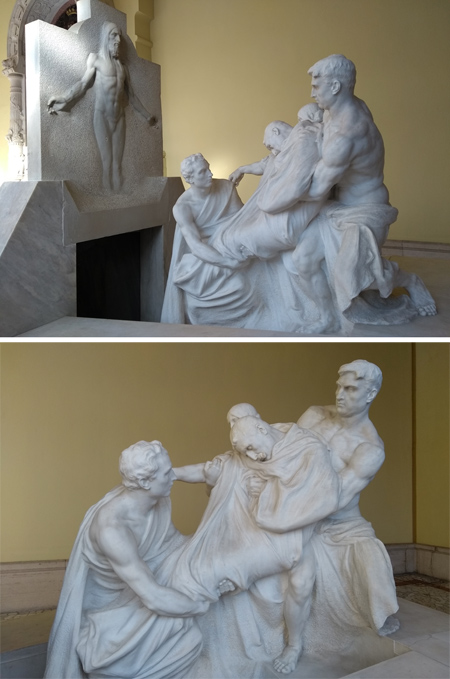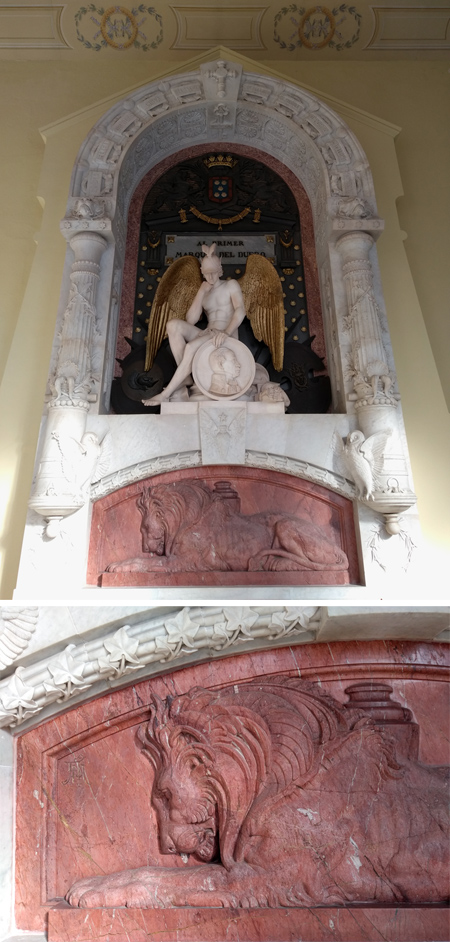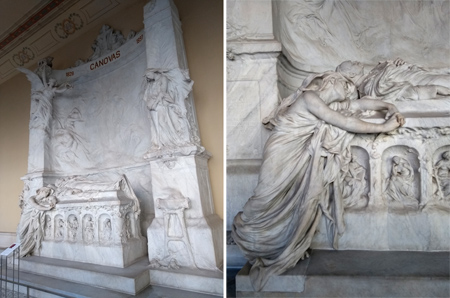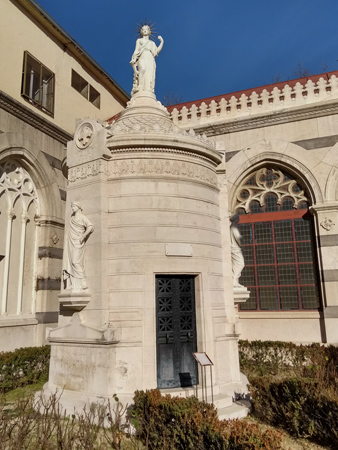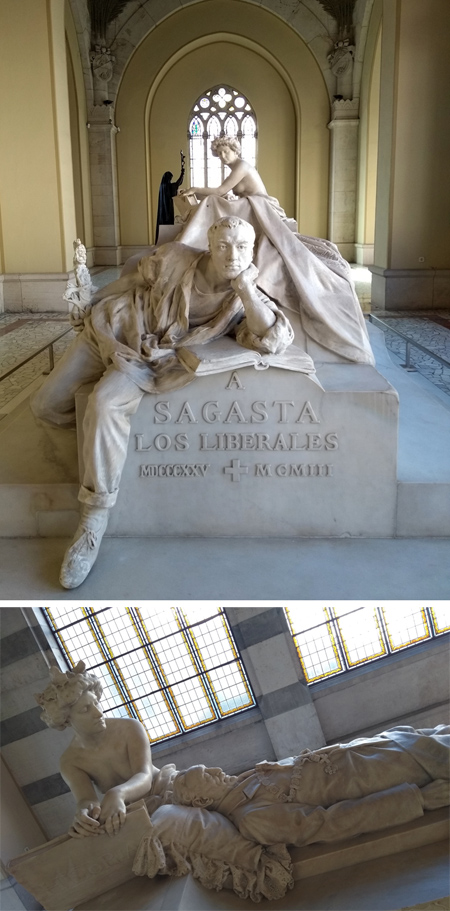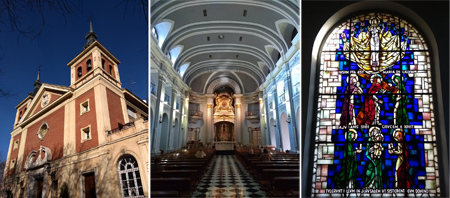
Just off the tourist track, this pantheon honors some of Spain’s most important political thinkers of the 19th century. New value has recently been given to this old idea, so I wouldn’t be surprised if more leading figures were placed here soon. If you’re at the Reina Sofia Museum, hop across the busy avenue & check out this hidden gem of Madrid.
During the French Revolution, the national government took a recently completed church & rededicated it for a new purpose: a pantheon to honor distinguished citizens who had contributed to the general welfare of France. Most pantheons had been for royal families until that moment, & many nations adopted this liberal idea to pay respect to those without a regal background.
In 1837, the Royal Basilica of Saint Francis the Great was chosen to become the Panteón Nacional de Políticos Ilustres. A search for the graves of possible, big-name candidates —El Cid, Cervantes, Lope de Vega, Velásquez, Murillo & many others— turned up very little physical remains. That first pantheon finally opened in 1869 but only survived five years… the few who had been placed there were returned to their original burial location after 1874.

But the idea did not die, so to speak. Dominican monks had been removed from the Convent of Our Lady of Atocha during the Spanish government’s confiscation of religious property in 1834. Soon after, the space became a military retirement/convalescent home with many important directors buried there. To better honor those military leaders, a new pantheon would be finished onsite by 1899.
Abandoned for most of the Franco era —liberal thinkers weren’t to be lauded— restoration works took place in the 1980s, & the pantheon opened to the public once again. In 2022, the official name was changed from Panteón de Hombres Ilustres to the more politically-correct (and accurate) Panteón de España… women like Clara Campoamor will soon be recognized here.
Several interior mausoleums reflect the trend of the time when the pantheon first opened: Art Nouveau. Agustín Querol created a swirling fantasy for the tomb of Cánovas del Castillo (above). Three tombs can also be attributed to one of Spain’s most famous monument makers, Mariano Benlliure. I love the individuality of each tomb, rather than adopting a uniform style for every one.
The joint mausoleum in the patio (above) came from a local cemetery that closed in 1884 & was transferred here in 1912. Inside are more important figures, including Juan Álvarez Mendizábal who is responsible for closing the original convent once located here!

Since you’re in the neighborhood, stop next door to see Nuestra Señora de Atocha. The image has long ties with the royal family: new queens leave their wedding bouquet at the altar, & new parents present the next generation of royals to her 45 days after birth. No, the current royal basilica isn’t very old; the original was destroyed during the civil war & this replacement was finished in 1951. But the Romanesque image of Mary has been around since at least 1148, probably longer… hidden during the civil war & spared destruction.
Both the pantheon & the basilica are free to enter. Don’t miss this unexpected treat!
